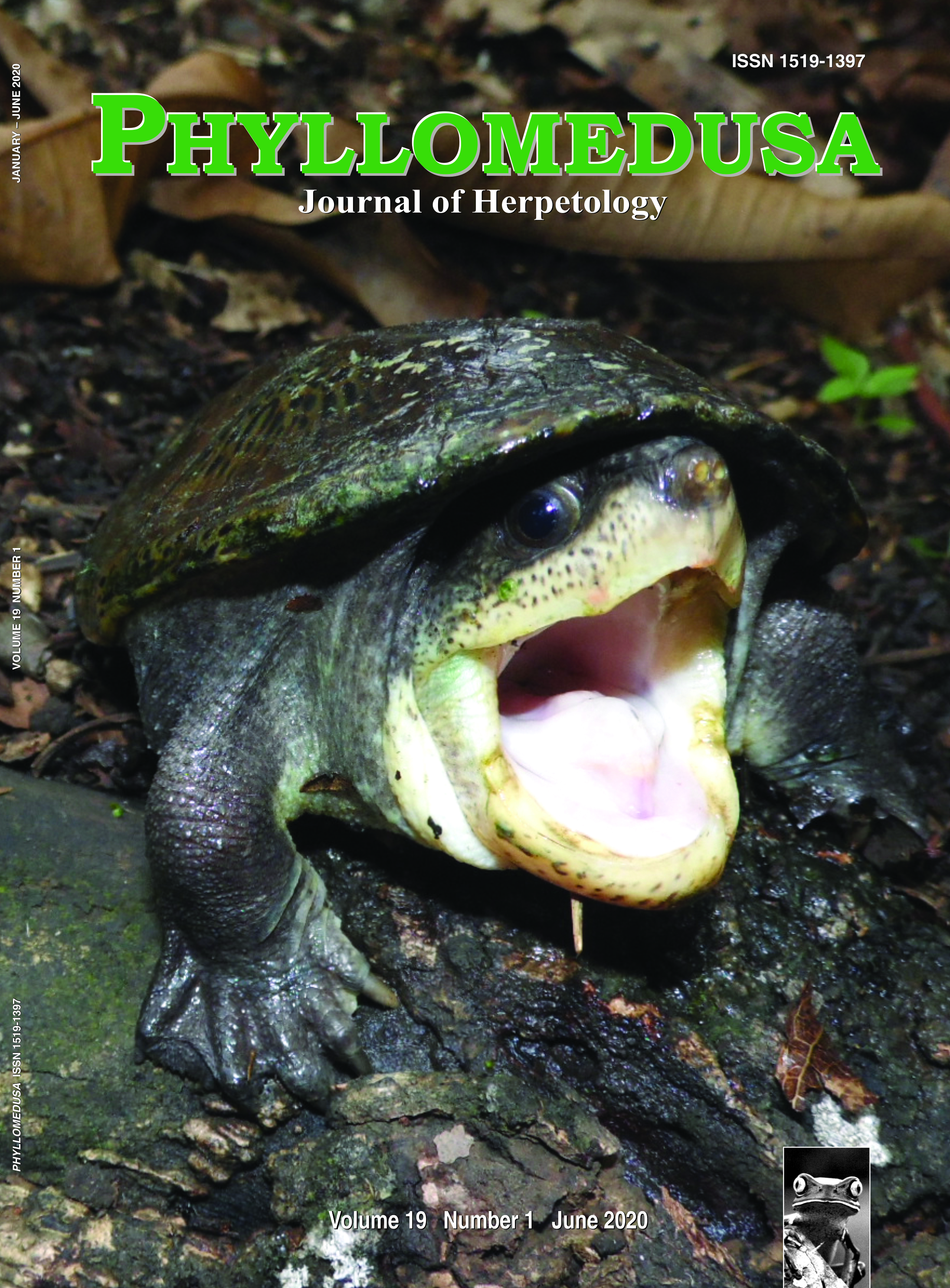Behavioral responses of tadpoles of Duttaphrynus melanostictus (Anura: Bufonidae) to cues of starved and fed dragonfly larvae
DOI:
https://doi.org/10.11606/issn.2316-9079.v19i1p93-98Abstract
Behavioral responses of tadpoles of Duttaphrynus melanostictus (Anura: Bufonidae) to cues of starved and fed dragonfly larvae. Tadpoles of Duttaphrynus melanostictus use chemoreception to detect kairomonal cues and excretory metabolites from predatory anuran tadpoles (Hoplobatrachus tigerinus) that consume them. We describe here the behavioral responses of tadpoles of D. melanostictus to predatory dragonfly larvae (Pantala flavescens). The predator’s kairomones (water conditioned by the starved predator) or its diet-derived metabolites released in excreta of predator after consumption of conspecific prey tadpoles were used to simulate predation risk. The tadpoles of D. melanostictus had no behavioral response to predator kairomones. However, the larvae reduced swimming movements and overall time spent in swimming, and had a higher burst speed/swimming velocity in response to water borne cues released from the excreta of predators fed conspecific prey. Thus, just the presence of dragonfly larvae does not elicit defense behaviors in tadpoles of D. melanostictus, but when predation risk is recognized as real (i.e., when tadpoles are exposed to excretory metabolites of predators fed conspecific tadpoles), defense behaviors are activated.



 Impact Factor (JCR): 0.600
Impact Factor (JCR): 0.600 CiteScore: 1.0
CiteScore: 1.0